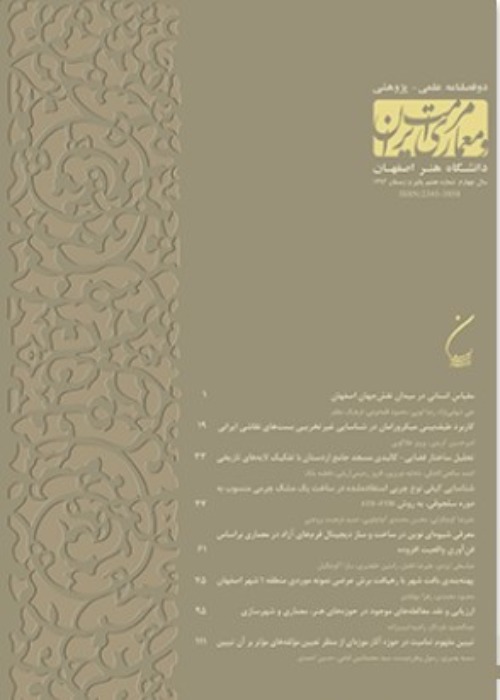"Mazar Street" Pattern in Timurid urbanism, Based on Historical and Archaeological Documents of Herat, Samarkand, and Shahr-i Sabz Complexes
The construction and placement of tombs on either side of an inner or outer city street, and with it, the formation of decorated facades on both sides of a path, was common during the reign of the Timurids. Early in this era, Timur built a complex inside the shahr-i sabz, which consisted of a street on either side of which the Timurid courtiers built tombs for themselves and formed the body around the street with an orderly line of tomb buildings. At the end of the street was the great building of the Dar al-Siyadeh school, which was the burial place of two of Timurchr('39')s sons. The next similar sample was formed in Samarkand. This cemetery, known as Shah-i zindah, was built on top of the ancient hills of Afrasiab. Like the Dar al-Siyadeh, in this complex, the arrangement of tombs on both sides of passage was formed the main axis of the complex. These tombs, which belonged to the princes and nobles of Timurid, were located on both sides of the road and sometimes in front of each other, thus formed a Mazar-street with a designed facade. Among the Mazar-street complexes in the Timurid era, Khiaban-e Herat Mazar-Street had a special place in terms of importance and breadth. The Khiaban in the city of Herat was originally the name of an area in the north of the city where many graves were gradually established over the years on both sides of the path that passed through it. During the Timurid period, the construction of buildings on both sides of this street flourished so much that at the end of this era, this street can be compared in terms of the establishment of religious buildings and tombs on both sides with the Dar al-Siyadeh and Shah-i Zendah complexes. This article seeks to study the gradual formation of buildings on the main axis of Herat Mazar-Street by the end of the Timurid period by reviewing historical books, archaeological reports, and other researches done about Herat Mazar-Street. Then, by specifying the structural features of this axis, compare it with other Mazar-Street axes in the Timurid era, and then explain the characteristic features of the Mazar-street complexes in the Timurid era. The results of this study show that at the end of the Timurid era, the cemetery of Khiaban-e Herat changed from a cemetery in the northern outskirts of the city to the most important religious axis of Herat and Khorasan region, and different buildings were built on both sides of it. This Mazar-street, similar to other Mazar-streets of the Timurid era, included an arranged row of tombs that Led at the end of the road to an important religious building.
- حق عضویت دریافتی صرف حمایت از نشریات عضو و نگهداری، تکمیل و توسعه مگیران میشود.
- پرداخت حق اشتراک و دانلود مقالات اجازه بازنشر آن در سایر رسانههای چاپی و دیجیتال را به کاربر نمیدهد.




